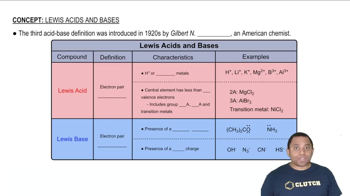Neurotransmitters are molecules that are released by nerve cells to other cells in our bodies, and are needed for muscle motion, thinking, feeling, and memory. Dopamine is a common neurotransmitter in the human brain and is a weak base. Its molecular weight is 153.2 g/mol. b. Experiments with rats show that if rats are dosed with 3.0 mg/kg of cocaine (that is, 3.0 mg cocaine per kg of animal mass), the concentration of dopamine in their brains increases by 0.75 𝜇𝑀 after 60 seconds. Calculate how many molecules of dopamine would be produced in a rat (average brain volume 5.00mm3) after 60 seconds of a 3.0 mg/kg dose of cocaine.

Tartaric acid, H2C4H4O6, has two acidic hydrogens. The acid is often present in wines, and a salt derived from the acid precipitates from solution as the wine ages. A solution containing an unknown concentration of the acid is titrated with NaOH. It requires 24.65 mL of 0.2500 M NaOH solution to titrate both acidic protons in 50.00 mL of the tartaric acid solution. Write a balanced net ionic equation for the neutralization reaction
 Verified step by step guidance
Verified step by step guidance
Verified video answer for a similar problem:
Key Concepts
Acid-Base Neutralization

Net Ionic Equations

Stoichiometry in Titration

Hard water contains Ca2+, Mg2+, and Fe2+, which interfere with the action of soap and leave an insoluble coating on the insides of containers and pipes when heated. Water softeners replace these ions with Na+. Keep in mind that charge balance must be maintained. (a) If 1500 L of hard water contains 0.020 M Ca2+ and 0.0040 M Mg2+, how many moles of Na+ are needed to replace these ions?
Hard water contains Ca2+, Mg2+, and Fe2+, which interfere with the action of soap and leave an insoluble coating on the insides of containers and pipes when heated. Water softeners replace these ions with Na+. Keep in mind that charge balance must be maintained. (b) If the sodium is added to the water softener in the form of NaCl, how many grams of sodium chloride are needed?
Tartaric acid, H2C4H4O6, has two acidic hydrogens. The acid is often present in wines, and a salt derived from the acid precipitates from solution as the wine ages. A solution containing an unknown concentration of the acid is titrated with NaOH. It requires 24.65 mL of 0.2500 M NaOH solution to titrate both acidic protons in 50.00 mL of the tartaric acid solution. Calculate the molarity of the tartaric acid solution.
If 23.9 mL of the strontium hydroxide solution was needed to neutralize a 37.5 mL aliquot of the nitric acid solution, what is the concentration (molarity) of the acid?
A solid sample of Zn(OH)2 is added to 0.350 L of 0.500 M aqueous HBr. The solution that remains is still acidic. It is then titrated with 0.500 M NaOH solution, and it takes 88.5 mL of the NaOH solution to reach the equivalence point. What mass of Zn(OH)2 was added to the HBr solution?
